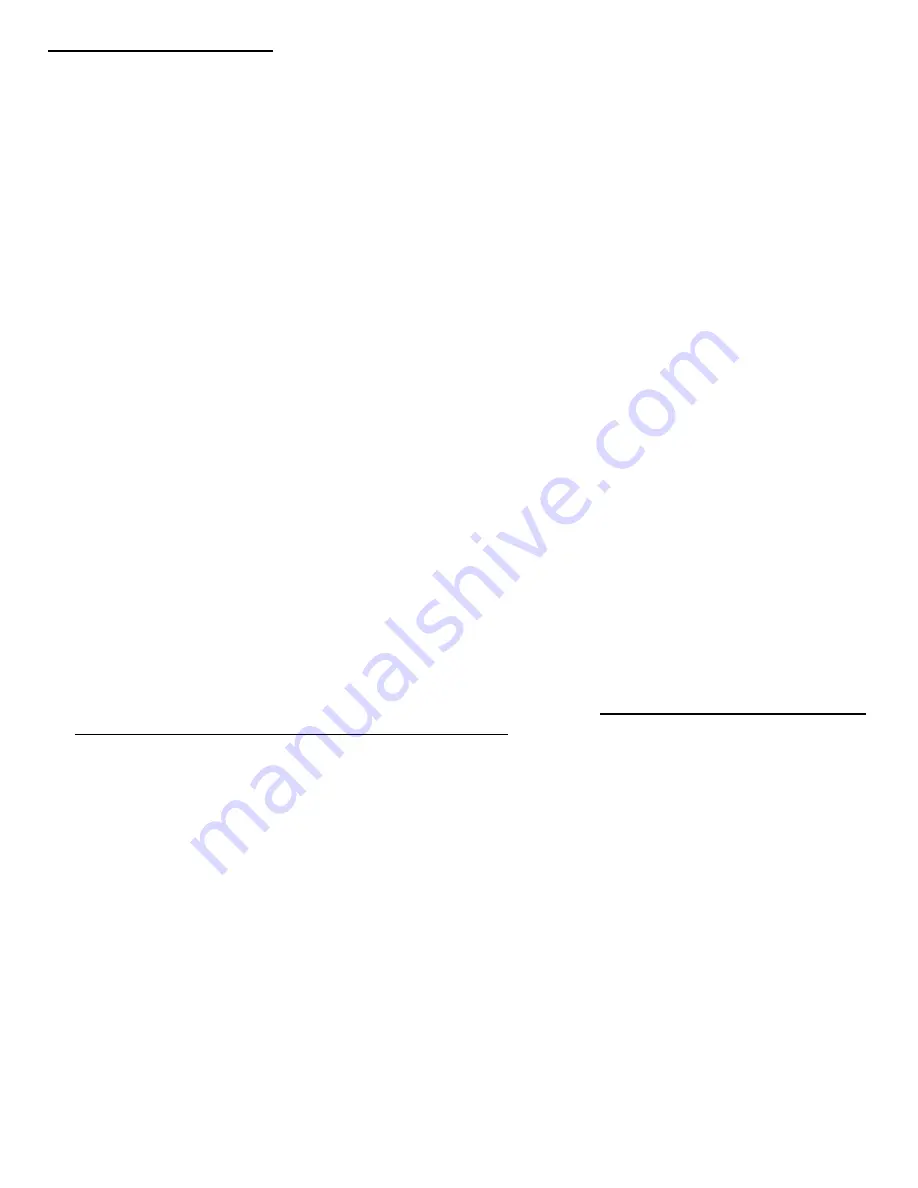
Motor Installation
•
Mount the motor using high grade 1/4" or 6mm dia. bolts with washers and locking nuts on the rear
of the firewall. Make sure your firewall is structurally sound. The crankshaft centerline is in the exact
center of the rear mounting plate bolt pattern.
•
The throttle arm is pre-tapped for a 2-56 ball link. Make sure the carburetor's idle set screw is
removed or set so that the carb can be fully closed by the servo at low trim. Use a high quality servo
for the throttle. A poor quality servo or linkage will not provide accurate and repeatable throttle
settings. Don't use metal to metal linkages.
•
You can un-hook, but
don't remove
, the throttle return spring if the motor is not going to be bench
run. The spring helps to limit shaft wear due to vibration.
•
Do not try to rotate the carburetor 180 deg. on the mounting block or remove the butterfly shaft
assembly.
•
The carburetor should have at least 1 1/2" (38mm) of clearance between the intake and the bottom
of the cowl. If there is less than 1 1/2", make an opening in the cowl below the carb at least as large
as the carb intake diameter.
•
Since the carburetor must often be adjusted differently with the cowl on as compared to off, we
recommend small access holes be made in the cowl for adjusting the needle valves with a long,
narrow, screw driver. Sometimes the needles can be reached through the cowl's openings for the
exhaust system.
•
A 32 oz. (or larger) fuel tank is recommended. The tank must be vented. The carb has a strong
pump, so the tank can be mounted almost anywhere. The fuel line and tank stopper must be gas
compatible. Do not use any silicone sealers on the fuel system. Gas can break it down and carry it
into the carb.
•
The inner diameter of the fuel tubing should be the same or larger than the carburetor's fuel inlet
fitting's inner diameter. 1/8” I.D. is recommended. Make sure all fuel line connections are secure.
Small nylon zip ties work well to keep the fuel line on the metal fittings. Make sure the fuel line is
secure and not touching the exhaust or cylinder fins. An inline fuel filter can be used. We
recommend filtering the gas entering the fuel tank from your field container.
•
Cooling is critical to motor performance and longevity. Allow as much cooling air as possible in
through the front inlets of the cowl. Allow an outlet opening approximately 2 1/2 times larger than
the intake at the bottom rear of the cowl for the hot air to escape. Air must flow through the cylinder
fins, not just inside the cowl, to properly cool the motor. Don't let the air take the easy way out! Make
it go through the fins. Round cowls with large frontal openings need ducting to direct the air through
the cylinder fins.
•
Air ducts can be made from thin plywood, balsa, fiberglass, or aluminum sheet to guide and force air
from the front inlets to and through the cylinder fins.
•
Depending on the location of the exhaust system, and cowl airflow, the carburetor may need some
air cooling also. A hot carb can be erratic in flight or make the motor hard to restart. Sometimes
placing heat shielding material between the exhaust and carburetor can help.
•
Keep components like the ignition system, fuel tank, fuel lines, receivers, etc, shielded from heat
generated by canister and tuned pipe exhaust systems. Hot fuel tanks and fuel lines can cause
frustrating tuning issues, and over heated electronic components can have intermittent problems or
total failures.
2



























